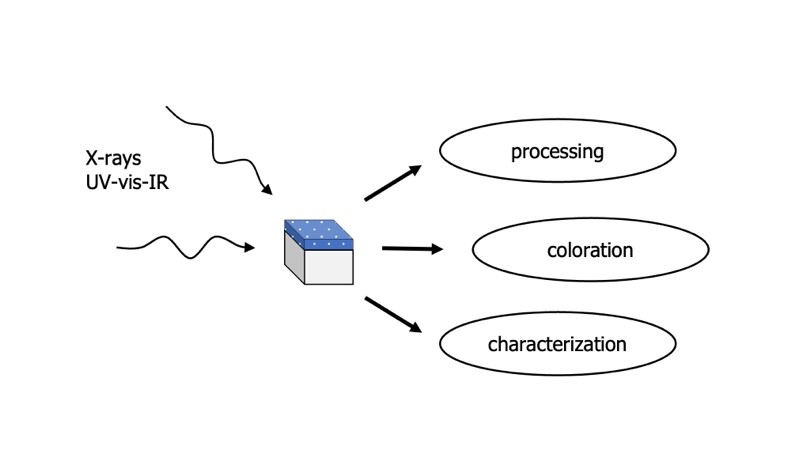April 26, 2024
Extracting insights on celadon glazes using light
SOKENDAI Student Dispatch Program program year: 2023
Angelo Perez RILLERA

Spectroscopic and imaging techniques using light of different wavelengths (UV-vis-IR, X-rays) can probe the optical and structural properties of celadon glazes. These can then provide insights on the processing, coloration, and characterization aspects of celadon glazes, which are relevant in archaeological and cultural heritage studies.
We seek to extract insights on celadon glazes that will benefit archaeological and cultural heritage studies. Transition metal ions (Fe and Ti) are vital components in celadon glazes and are inextricably linked to the glaze processing and coloration. Hence, probing the transition metal optical and structural properties can provide insights on these aspects of celadon glazes. X-ray and UV-vis-IR techniques are valuable tools to probe these properties. Previously, we have observed discrepancies between Fe structural properties and the observed colors. Further investigation using depth-resolved measurements showed surface oxidation that appears to be affected by the cooling atmosphere and amount of Fe in the glaze [1]. Consequently, a depth-sensitivity limitation of X-ray absorption spectroscopy has been revealed. Spatially-resolved measurements has been deemed important and given focus. Analysis of measurements from Fe,Ti-bearing glazes are under way, but the results suggest that optical absorption mechanisms other than those currently in literature are relevant. Recognition of these contribute to a proper understanding of the underlying absorption mechanisms in glazes, which is useful for ceramic artifact investigations as well as glaze production innovations.
[1] Rillera, A. P. et al. (2023). Journal of the European Ceramic Society, 43(13), 5706-5711.
Period of Stay
Date of Departure: 2023/09/10
Date of Return: 2024/02/16
Country and/or City
Osaka, Japan
Visiting Institute, Host, or Meeting
Institute of Mathematics, University of Potsdam
What you learned and achieved during the visit
The SOKENDAI Dispatch program has allowed me to learn and experience various UV-vis-IR spectroscopic and imaging techniques. Spatial and angular resolutions were also explored. It has opened opportunities to collaborate with other researchers in exploiting the capabilities of these techniques.
Department of Materials Structure Science,Angelo Perez RILLERA
I am a PhD student in the Department of Materials Structure Science. I use X-ray and UV-vis-IR spectroscopic and imaging techniques to extract insights on celadon glazes for archaeological and cultural heritage applications.
